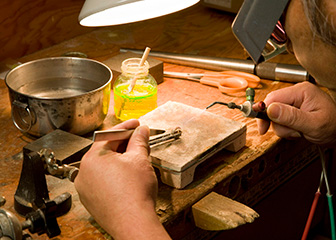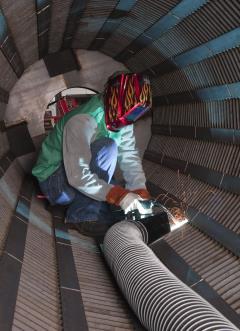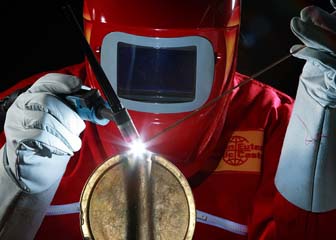Summary
Please enable javascript to play this video.
| Quick Facts: Welders, Cutters, Solderers, and Brazers | |
|---|---|
|
$51,000 per year
$24.52 per hour |
|
| High school diploma or equivalent | |
| None | |
| Moderate-term on-the-job training | |
| 457,300 | |
| 2% (Slower than average) | |
| 9,900 | |
What Welders, Cutters, Solderers, and Brazers Do
Welders, cutters, solderers, and brazers use hand-held or remotely controlled equipment to join, repair, or cut metal parts and products.
Work Environment
Welders, cutters, solderers, and brazers may work outdoors in all types of weather, or they may work indoors, sometimes in a confined area. Most work full time, and some work more than 40 hours per week.
How to Become a Welder, Cutter, Solderer, or Brazer
Welders, cutters, solderers, and brazers typically need a high school diploma or equivalent, combined with technical and on-the-job training, to enter the occupation.
Pay
The median annual wage for welders, cutters, solderers, and brazers was $51,000 in May 2024.
Job Outlook
Employment of welders, cutters, solderers, and brazers is projected to grow 2 percent from 2024 to 2034, slower than the average for all occupations.
Despite limited employment growth, about 45,600 openings for welders, cutters, solderers, and brazers are projected each year, on average, over the decade. Most of those openings are expected to result from the need to replace workers who transfer to different occupations or exit the labor force, such as to retire.
State & Area Data
Explore resources for employment and wages by state and area for welders, cutters, solderers, and brazers.
Similar Occupations
Compare the job duties, education, job growth, and pay of welders, cutters, solderers, and brazers with similar occupations.
More Information, Including Links to O*NET
Learn more about welders, cutters, solderers, and brazers by visiting additional resources, including O*NET, a source on key characteristics of workers and occupations.
 United States Department of Labor
United States Department of Labor










